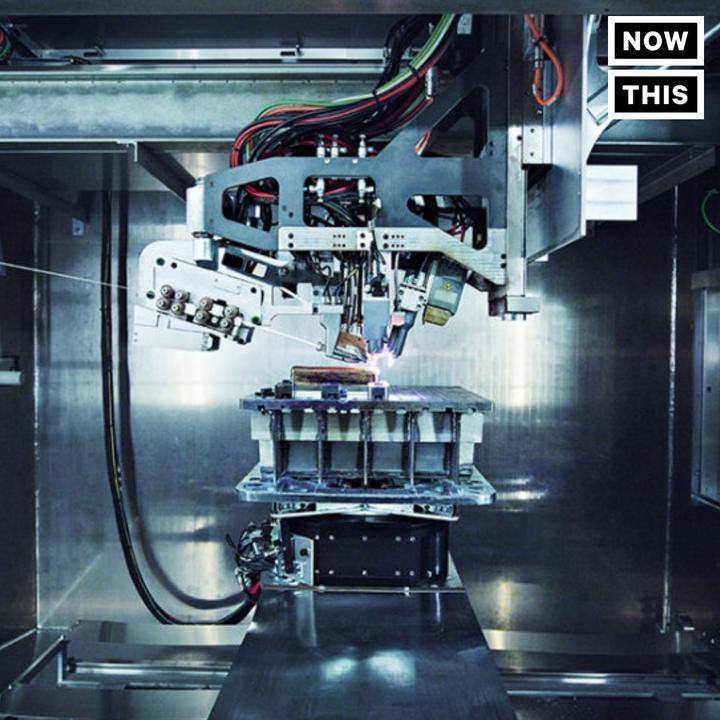3D printing could put an end to annoying plaster casts.
Category: 3D printing – Page 103

3D Printing The Next Five Years
This is a guest post in our series looking at the future of 3D Printing. To celebrate 5 years of reporting on the 3D printing industry, we’ve invited industry leaders and 3D printing experts to give us their perspective and predictions for the next 5 years and insight into trends in additive manufacturing.
Brian O’Connor is Vice President, Production Operations at Lockheed Martin Space Systems. Lockheed Martin is a global security and aerospace company that employs approximately 97,000 people worldwide and is principally engaged in the research, design, development, manufacture, integration and sustainment of advanced technology systems, products and services.
How lockheed martin is printing the path to mars by brian o’connor.
China and Europe May Build A “Moon Village” in the 2020s
In recent years, multiple space agencies have shared their plans to return astronauts to the Moon, not to mention establishing an outpost there. Beyond NASA’s plan to revitalize lunar exploration, the European Space Agency (ESA), Rocosmos, and the Chinese and Indian federal space agencies have also announced plans for crewed missions to the Moon that could result in permanent settlements.
As with all things in this new age of space exploration, collaboration appears to be the key to making things happen. This certainly seems to be the case when it comes to the China National Space Administration (CNSA) and the ESA’s respective plans for lunar exploration. As spokespeople from both agencies announced this week, the CNSA and the ESA hope to work together to create a “Moon Village” by the 2020s.
The announcement first came from the Secretary General of the Chinese space agency (Tian Yulong). On earlier today (Wednesday, April 26th) it was confirmed by the head of media relations for the ESA (Pal A. Hvistendahl). As Hvistendahl was quoted as saying by the Associated Press: “The Chinese have a very ambitious moon program already in place. Space has changed since the space race of the ’60s. We recognize that to explore space for peaceful purposes, we do [need] international cooperation.”
Scientists Create 3D-Printed Living Human Skin
This is what 3D-printed living skin looks like.

Next List 2017: 20 Tech Visionaries You Should Have Heard of
MICROSOFT WILL BUILD computers even more sleek and beautiful than Apple’s. Robots will 3D-print cool shoes that are personalized just for you. (And you’ll get them in just a few short days.) Neural networks will take over medical diagnostics, and Snapchat will try to take over the entire world. The women and men in these pages are the technical, creative, idealistic visionaries who are bringing the future to your doorstep. You might not recognize their names—they’re too busy working to court the spotlight—but you’ll soon hear about them a lot. They represent the best of what’s next.
You might not recognize their names—they’re too busy working to court the spotlight—but you’ll soon hear about them a lot. They represent what’s next.
This robot can build a 50-foot-wide house all by itself in 14 hours, at MIT or on Mars
Researchers at the Massachusetts Institute of Technology have created a double-armed, laser-guided robot that can basically 3D print a 50-foot-wide house in less than 14 hours with almost no human intervention. The Digital Construction Platform, described today in Science Robotics, consists of a large hydraulic arm mounted on a platform with motorized treads, plus a smaller electric-powered arm for finer movements. The MIT team programmed the solar-powered machine to spray out foam construction material, layer by layer, to form a 12-foot-high, igloo-like structure big enough to house a family. The researchers hope such robots could someday be sent to the moon, Mars or Antarctica to build “print-in-place” habitats from the materials at hand … or at manipulator.


FAA Approves 3D-Printed Titanium For Planes
3D-printed parts could save aircraft manufacturers billions of dollars.

How 3D printing is changing the future of the space industry
In aerospace, parts are complicated, and manufacturing them can be very expensive and time consuming. When rocket engine parts can take up to a year to make, it is very difficult to start a new rocket company and for aerospace companies to be cost effective, innovative and nimble.
These barriers to entry are why you don’t see many start-up space companies and why the industry has relied on the same basic engine designs as those built during the Apollo program.
3D printing is changing all that. At Virgin Orbit, we are building a rocket system that will send small satellites into orbit. We aim to open access to space for small satellites to improve life on earth through services such as internet connectivity to the under connected and data for planning, production, disaster mitigation etc.

The Future of NewSpace
The first 3D printer from Made In Space was installed aboard the International Space Station (ISS) in November 2014. The idea sounds cool, but many ordinary earthlings have yet to feel its impact.
The start-up, based at NASA Ames Research Center in California, has since installed a second 3D printer on the ISS. The Additive Manufacturing Facility (AMF) is the first commercial 3D printer in space. Brought to the ISS in 2016, the AMF is already printing orders for commercial customers, including the first 3D-printed advertisement in space, a crowdsourced sculpture and projects for educational programs, such as Enterprise In Space.
With the AMF, the implications are starting to become clear. 3D printing in space isn’t just meant to be a novelty, but a technology that enables humanity’s proliferation throughout the cosmos. Now, it’s possible for customers with a small wad of cash to 3D print plastic objects on the ISS, but, if Made In Space’s plans pan out, we may see a future in which those customers can head to space themselves.